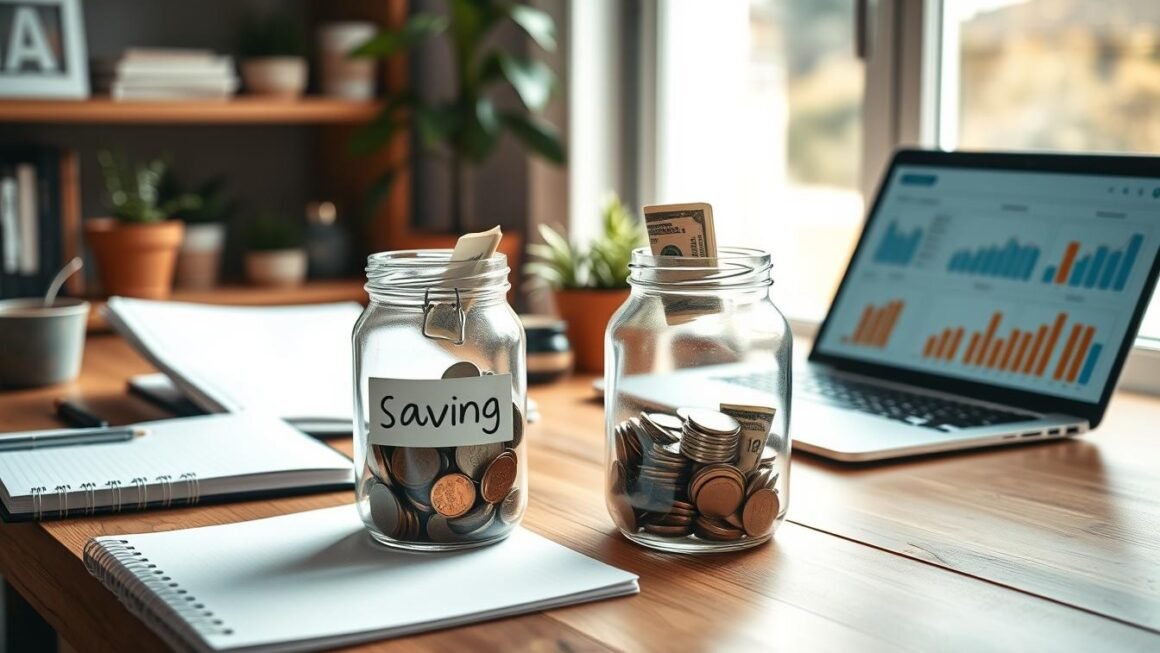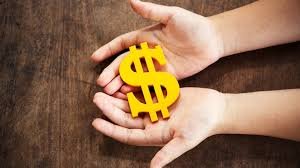
Debt can feel overwhelming, but with the right approach, you can take charge of your finances and work towards a debt-free life. This guide offers practical strategies to help you understand your debt, create a budget, and implement effective repayment methods. Let’s explore how you can make smart financial decisions that lead to freedom from debt.
Key Takeaways
- Understanding your debt-to-income ratio is crucial for managing your finances effectively.
- Creating a detailed budget helps prioritize debt repayment and track spending.
- Choose a debt repayment strategy that suits you, such as the debt snowball or avalanche method.
- Increasing your income through side jobs or skill development can accelerate debt repayment.
- Building an emergency fund can prevent future debt by covering unexpected expenses.
Understanding the Debt-to-Income Ratio
The debt-to-income (DTI) ratio is a key number that shows how much of your income goes to paying off debt. It’s important because it helps lenders see if you can handle more debt. To find your DTI, you need to do a few simple steps:
Calculating Your Debt-to-Income Ratio
- List all your monthly debts: This includes credit cards, loans, and mortgages.
- Add up your total monthly debt payments.
- Divide that total by your gross monthly income (the amount you earn before taxes).
Here’s a quick example:
| Monthly Debt Payments | Gross Monthly Income | DTI Ratio |
|---|---|---|
| $1,500 | $5,000 | 30% |
Interpreting Your Debt-to-Income Ratio
- A DTI of below 36% is usually seen as good. It means you’re managing your debt well.
- A DTI between 37% and 49% suggests you might be in a tough spot and should think about reducing your debt.
- A DTI of 50% or higher is a warning sign. It means you may be struggling with your finances and need to act fast.
Why Your Debt-to-Income Ratio Matters
Understanding your DTI is crucial because it can affect your ability to borrow money. Lenders look at this number to decide if they will give you a loan. Keeping your DTI low can help you get better loan terms and lower interest rates.
Knowing your DTI can help you make smart financial choices and avoid future debt problems.
By keeping track of your DTI, you can take steps towards financial freedom and make informed decisions about your money.
Creating a Budget for Debt-Reduction
Listing Your Monthly Expenses
To start your journey towards financial freedom, you need to know where your money goes each month. Begin by listing all your necessary expenses:
- Rent or mortgage
- Utilities (electricity, water, gas)
- Groceries
- Transportation (gas, public transport)
- Insurance (health, car)
This will help you see how much you need to cover your basic needs.
Allocating Funds for Debt Repayment
Once you have your expenses listed, it’s time to allocate funds for paying off your debts. Here’s a simple way to do it:
- Identify your total income for the month.
- Subtract your necessary expenses from your income.
- Use the leftover amount to pay off debts.
This leftover money is your discretionary income, which can be redirected to tackle your debts more effectively.
Adjusting Your Budget to Stay on Track
Your budget isn’t set in stone. It’s important to adjust it regularly to stay on track. Here are some tips:
- Review your spending every month to find areas to cut back.
- Set specific goals for debt repayment, like paying off a certain amount each month.
- Track your progress to stay motivated.
Remember, a budget is a tool to help you manage your money better. By sticking to it, you can make significant strides towards reducing your debt and achieving financial stability.
By following these steps, you can create a solid budget that prioritizes debt repayment and helps you regain control over your finances. Understanding your expenses and making adjustments will lead you closer to your goal of being debt-free!
Effective Debt Repayment Strategies

When it comes to paying off debt, having a solid plan is key. Here are some effective strategies to help you on your journey to financial freedom.
The Debt Snowball Method
The Debt Snowball Method is a popular approach where you focus on paying off your smallest debts first. Here’s how it works:
- List all your debts from smallest to largest.
- Make minimum payments on all debts except the smallest one.
- Put any extra money towards the smallest debt until it’s paid off.
- Move on to the next smallest debt and repeat the process.
This method can provide quick wins, boosting your motivation as you eliminate debts one by one.
The Debt Avalanche Method
In contrast, the Debt Avalanche Method focuses on paying off debts with the highest interest rates first. Here’s a simple breakdown:
- List your debts from highest to lowest interest rate.
- Make minimum payments on all debts except the one with the highest interest.
- Put any extra funds towards the highest interest debt until it’s gone.
- Continue this process with the next highest interest debt.
This strategy can save you money on interest in the long run, but it may take longer to see progress.
Choosing the Right Strategy for You
Deciding between the snowball and avalanche methods depends on your personal preferences and financial situation. Here are some tips to help you choose:
- Consider your motivation: If you need quick wins, the snowball method might be better.
- Think about interest costs: If saving money is your priority, the avalanche method could be more effective.
- Evaluate your debts: Look at the types and amounts of your debts to see which method fits best.
Remember, the most important thing is to stay committed to your plan. Consistency is key to achieving your debt-reduction goals!
Increasing Your Income to Accelerate Debt-Reduction
Increasing your income is a powerful way to speed up your journey to financial freedom. Here are some effective ways to boost your earnings:
Exploring Side Gigs and Freelance Work
- Freelancing: Use your skills to take on freelance projects. Websites like Upwork or Fiverr can help you find clients.
- Part-time jobs: Look for part-time work in your community. Retail or food service jobs can provide extra cash.
- Selling items: Consider selling things you no longer need online or at garage sales.
Negotiating a Raise or Promotion
- Research: Know the average salary for your position and prepare to discuss it with your boss.
- Show your value: Highlight your contributions and how they benefit the company.
- Be confident: Approach the conversation with confidence and a positive attitude.
Investing in Skill Development
- Online courses: Take courses to learn new skills that can lead to higher-paying jobs.
- Networking: Connect with professionals in your field to learn about opportunities.
- Certifications: Obtain certifications that can make you more valuable in your job.
By increasing your income, you can allocate more funds towards your debt, making it easier to pay off what you owe. Every extra dollar counts!
Reducing Living Expenses to Free Up Funds
Finding ways to reduce your living expenses is essential for freeing up more money to tackle your debt. By looking closely at your spending habits, you can find areas to cut back and allocate more funds toward paying off your debts.
Cutting Utility Costs
- Conserve energy: Turn off lights when you leave a room.
- Use water-saving devices to lower your water bill.
- Switch to energy-efficient appliances to save in the long run.
Smart Grocery Shopping
- Plan your meals ahead of time to avoid impulse buys.
- Use a grocery list to stick to essentials only.
- Take advantage of sales and consider buying generic brands for savings.
Downsizing and Relocating
- Evaluate if you can downsize your living space to save on rent or mortgage.
- Consider moving to a less expensive area if possible.
- If you own a home, think about refinancing your mortgage for a better rate.
By making these changes, you can significantly lower your monthly expenses and redirect those savings toward paying off your debt. Staying disciplined and committed to your financial goals is key to achieving financial freedom.
Summary
Reducing living expenses is a powerful way to free up funds for debt repayment. Focus on cutting utility costs, shopping smartly, and considering downsizing to make a real difference in your financial situation. Every little bit helps!
Managing Credit Card Debt Proactively

Addressing credit card debt requires a smart and active approach. It’s not just about knowing you have debt; it’s about taking steps to manage and eliminate it. Here are some effective strategies to help you tackle your credit card debt:
Paying More Than the Minimum
- Paying more than the minimum amount on your credit card bills can help you get out of debt faster. Credit card companies set low minimum payments to keep you in debt longer. By paying a little extra each month, you can save on interest and reduce your total debt more quickly.
- For example, if you owe $1,000 at an interest rate of 18%:
| Payment Amount | Months to Pay Off | Total Interest Paid |
|---|---|---|
| $25 | 60 | $300 |
| $50 | 24 | $50 |
| $100 | 12 | $10 |
Consolidating Credit Card Debt
- Debt consolidation can simplify your payments. This means combining multiple debts into one loan with a lower interest rate. This can make it easier to manage your payments and save money on interest.
- Consider options like:
- 0% balance transfer credit cards
- Personal loans with lower rates
- Home equity loans (if applicable)
Negotiating with Creditors
- Don’t hesitate to negotiate with creditors. Many credit card companies are willing to work with you, especially if you’re facing financial difficulties. You can ask for:
- Lower interest rates
- Waived fees
- Modified payment plans
Taking control of your credit card debt can lead to financial freedom. Remember, it’s important to stay committed to your plan and make adjustments as needed to stay on track. By being proactive, you can regain control of your finances and work towards a debt-free future.
Building an Emergency Fund to Prevent Future Debt
Creating an emergency fund is a smart way to avoid falling into debt when unexpected expenses arise. Having a safety net can keep you from relying on credit cards. Here’s how to get started:
Setting an Initial Savings Goal
- Determine how much savings you should have: Aim for at least $1,000 as a starter fund.
- Open a high-yield deposit account: This will help your money grow faster.
- Prioritize savings: Treat your emergency fund like a bill that must be paid each month.
Automating Your Savings
- Set up automatic transfers from your checking account to your emergency fund.
- This way, you won’t forget to save, and it becomes a regular habit.
- Consider increasing the amount as your income grows.
Using Your Emergency Fund Wisely
- Only use this fund for true emergencies, like medical bills or car repairs.
- Avoid using it for planned expenses or wants.
- Replenish the fund as soon as possible after using it.
Building an emergency fund is a crucial step in achieving financial stability. It not only protects you from future debt but also gives you peace of mind.
By following these steps, you can effectively start building your emergency fund and secure your financial future.
Conclusion
In conclusion, tackling debt is a journey that requires patience and smart planning. By understanding your financial situation and using the strategies we’ve discussed, you can take meaningful steps toward becoming debt-free. Remember, it’s important to stay focused and make adjustments as needed. Celebrate your small wins along the way, as they will motivate you to keep going. With determination and the right tools, you can achieve financial freedom and build a brighter future for yourself.
Frequently Asked Questions
What is the first step to pay off my debt?
Start by writing down all your debts. List how much you owe, the interest rates, and the minimum payments. This will help you see the full picture.
How can I make a budget for paying off debt?
Create a list of all your monthly expenses. See where you can cut back and make sure to set aside money for debt payments.
What are the best methods to pay down debt?
Two popular methods are the debt snowball and debt avalanche. The snowball focuses on paying off the smallest debts first, while the avalanche targets the debts with the highest interest.
Is it a good idea to combine my debts?
Yes, if you can get a lower interest rate by combining your debts, it can help you save money and make payments easier.
How can I increase my income to help pay off debt?
Look for side jobs, freelance work, or ask for a raise at your current job. Every bit of extra money can help you pay off your debt faster.
Why is having an emergency fund important when paying off debt?
An emergency fund helps you cover unexpected costs without relying on credit cards. This way, you can keep your debt under control.



